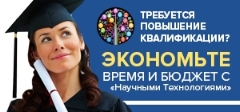| |
The article deals with the problem of studying and describing the personal characteristics of children of primary school age with disorders of the motor sphere of acquired genesis. The procedure for studying the personality of younger schoolchildren with acquired motor disorders of varying severity is described, and the results of the study are presented. The study found that younger students with motor impairments of acquired genesis of mild severity are characterized by a more positive attitude towards themselves, the expectation of a positive acceptance of their personality by other people, the presence of positive personality traits (friendliness, responsiveness, self-confidence, activity, trustfulness) , as well as the presence of negative personality traits (low self-interest, lack of self-control, anxiety, aggressiveness). The personality of younger schoolchildren with motor disorders of acquired genesis of a severe degree is characterized by: a predominantly positive attitude towards themselves, the expectation of a positive acceptance of their personality by other people, the presence of positive personality traits (friendliness, honesty, confidence, high self-interest, self-control), as well as the presence of negative personality traits (callousness, suspicion, passivity, anxiety, aggressiveness). Long-term observation of younger schoolchildren with motor disorders of acquired genesis of a severe degree suggests that their stable personal characteristics, manifested throughout the entire rehabilitation period, are low sociability, passivity, lack of initiative in activities, callousness, closeness, self-doubt. Despite this, such manifestations as the level of anxiety, aggressiveness, dependence, activity have a tendency to positive changes. By the end of the rehabilitation period, the impact of depriving factors, including the severity of pain syndrome, motor limitation, fears of medical manipulations, decreases, children begin to show greater independence, independence and activity.
Keywords:personality traits, younger schoolchildren, motor disorders of acquired genesis, rehabilitation period.
|






